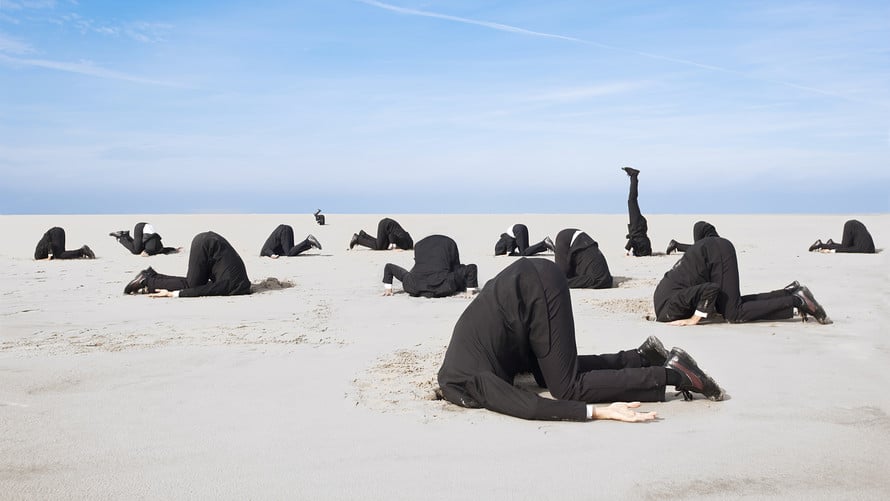
There was nearly nowhere to run or hide to for investors on Tuesday.
The Dow Jones Industrial Average snapped an eight-session streak of gains with a triple-digit decline, wiping out the blue-chip average’s meager 2018 advance.
But most notable about Tuesday’s price action is that as the Dow DJIA, -0.78% S&P 500 index SPX, -0.68% and the Nasdaq Composite COMP, -0.81% declined, gold for June delivery GCM8, +0.22% saw its worst one-day drop since December 2016, falling to the lowest level for a most-active contract since December, according to FactSet data.
Meanwhile, the yield on the closely watched 10-year Treasury note TMUBMUSD10Y, -0.36% which moves inversely to prices, shot up to its highest level since 2011, hitting an intraday peak around 3.093%, and posting its largest single-session rise since March 1, 2017, according to WSJ Market Data Group.
All that means that haven assets like gold and bonds weren’t providing much of a safe place to park money at a challenging time, instead plunging to levels not recently seen in months amid a downturn in stocks.
“The only place to hide was in cash because the dollar’s up,” said Art Hogan, chief market strategist at B. Riley FBR Inc.
Tuesday’s action wasn’t the normal dynamic for markets. Havens like bonds and gold tend to draw bids when stocks tumble.
So, why did those assets fall in tandem on Tuesday?
The move has been widely attributed to the jolt higher in the 10-year Treasury above 3%, which rippled through markets, underpinned by economic reports and rising crude-oil prices CLM8, -0.32% that have suggested that creeping inflation and prices may be sufficiently robust to compel the Federal Reserve to hike rates at a more rapid clip than the market has anticipated.
Data on Tuesday showed retail sales climbed 0.3% in April following an even larger gain in March than originally reported. March sales were revised to show a 0.8% increase versus an initial estimate of 0.6%.
The upshot? The data signal that consumers have increased spending in the past two months, aided by a cut in taxes, annual tax refunds and one of the healthiest jobs markets in decades. That is a scenario that some market participants believe could warrant a quickened pace of moves by the Federal Reserve.
Markets have been pricing in two additional rate increases for 2018 and one further hike is now being seen as a possibility, given fed-funds futures—a measure of markets bets on future rates—now show a 54% chance for a total of four rate increases this year, according to CME Group.
Higher rates mean higher borrowing costs and can force investors to reprice equities. Meanwhile, richer yielding risk-free Treasurys can draw demand away from stocks, which have been volatile in recent weeks after falling in to correction territory, defined as a 10% pullback from a recent peak, in February.
Ascending rates, meanwhile, also can dull the appeal of gold, which doesn’t offer a yield. A rise in the U.S. dollar, as measured by the ICE U.S. Dollar Index DXY, -0.01% which measures the currency against six major rivals, delivered a one-two punch to the precious commodity along with rates. A strengthening dollar can make dollar-pegged assets like gold more expensive to buyers using other currencies.
To be sure, not much has changed in the overall picture for the market, but Wall Street is wrestling with an environment in which the Fed is normalizing monetary policy and central bankers in other developed economies are on the brink of taking the same path toward ending easy-money programs.
That return to normalcy for markets comes as the U.S. economic expansion is approaching its ninth year and some view the current phase as “late-cycle,” hence more prone to commence a downturn.
Hogan notes that the key factor in helping the market get comfortable with rising rates is an economy that is still on a firm footing.
“The problem with getting too concerned about rising rates is that it comes from a point of better news and an improving economy,” Hogan said. The market veteran said that the dynamic on Wall Street will likely revert to normal and that investors shouldn’t be focused on a particular level for 10-year rates.
“Rates are rising for the right reasons,” he said.
